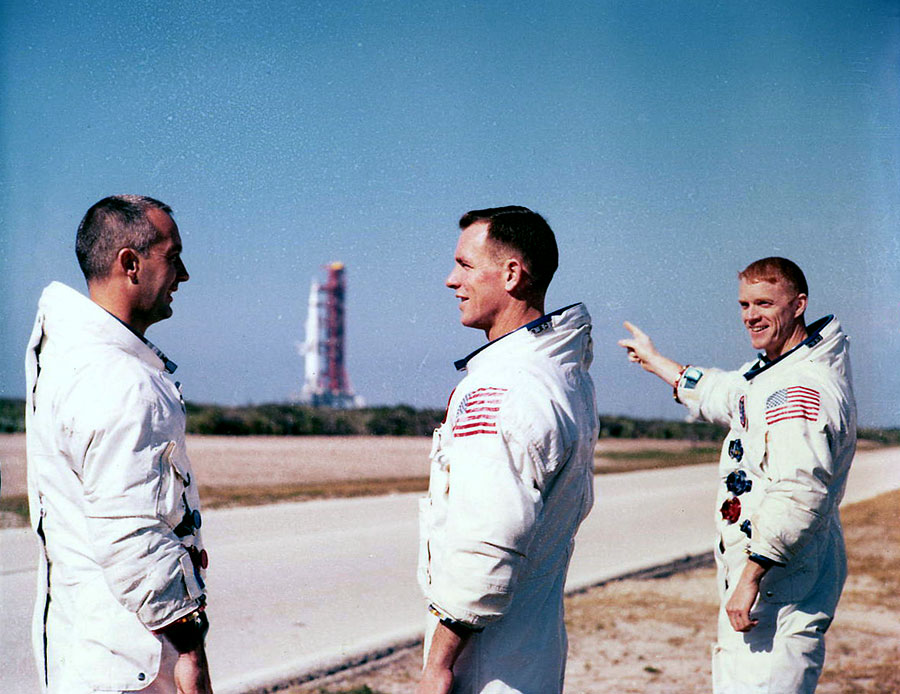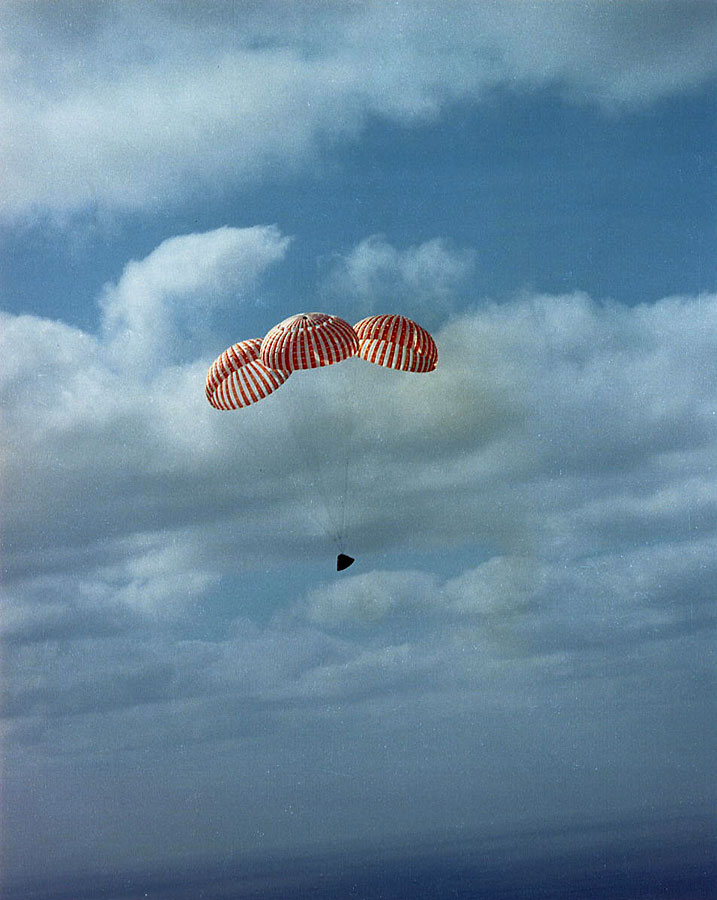Apollo 8 - First crewed flight of Saturn V
Apollo 8, launched on December 21, 1968, marked a pivotal moment in space exploration as the first crewed mission to leave Earth's gravitational influence and orbit the Moon. The mission was commanded by Frank Borman, with James Lovell as Command Module Pilot and William Anders as Lunar Module Pilot. Originally intended to test both the Command/Service Module (CSM) and the Lunar Module (LM) in Earth orbit, the mission profile was altered due to delays in the LM's readiness. Consequently, NASA opted for a bold strategy: a lunar orbital flight using only the CSM.



